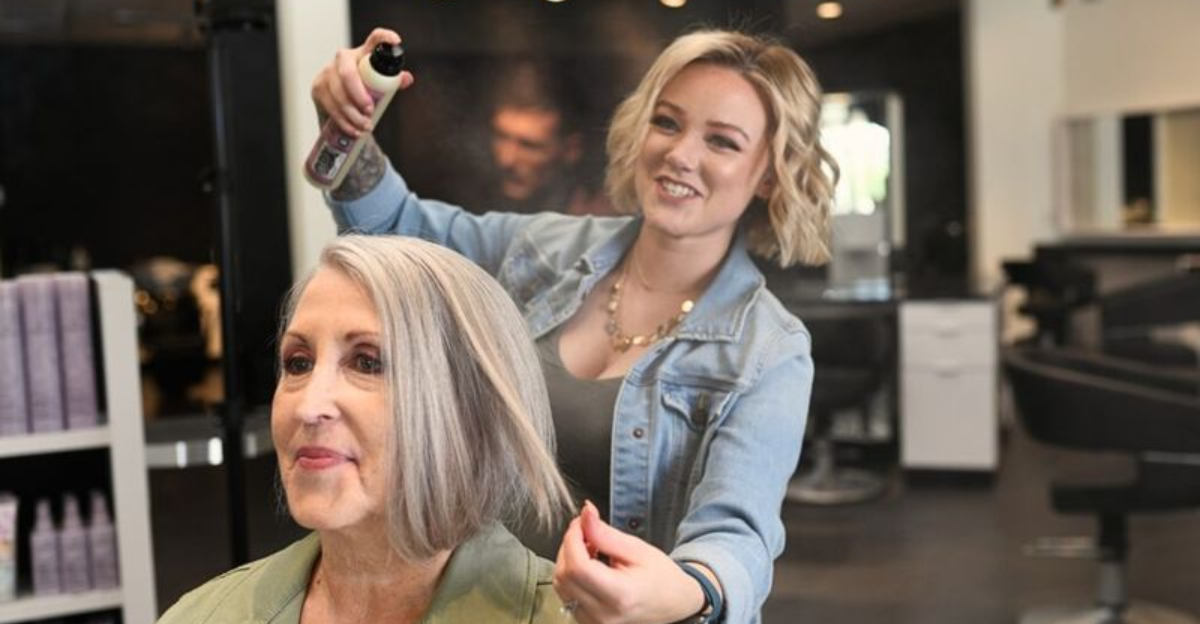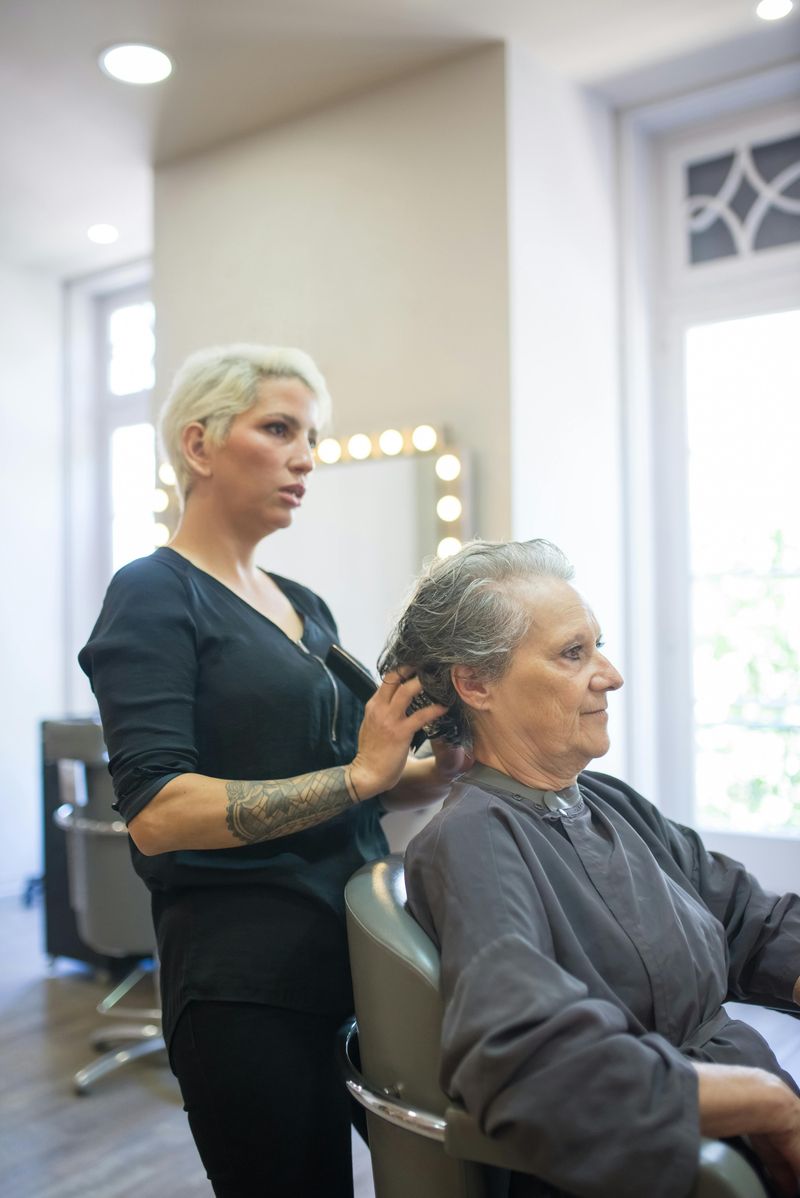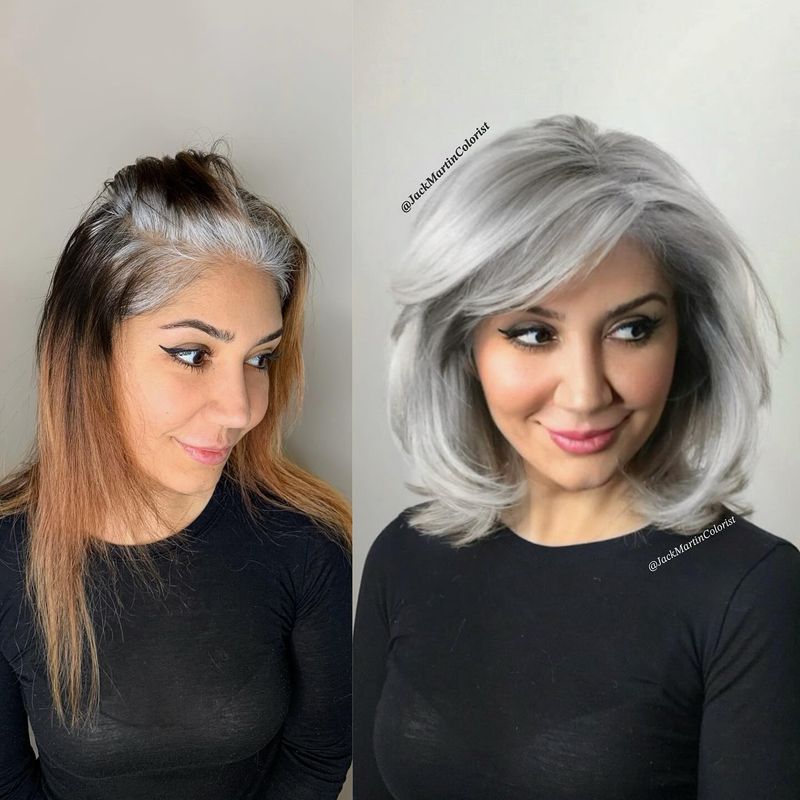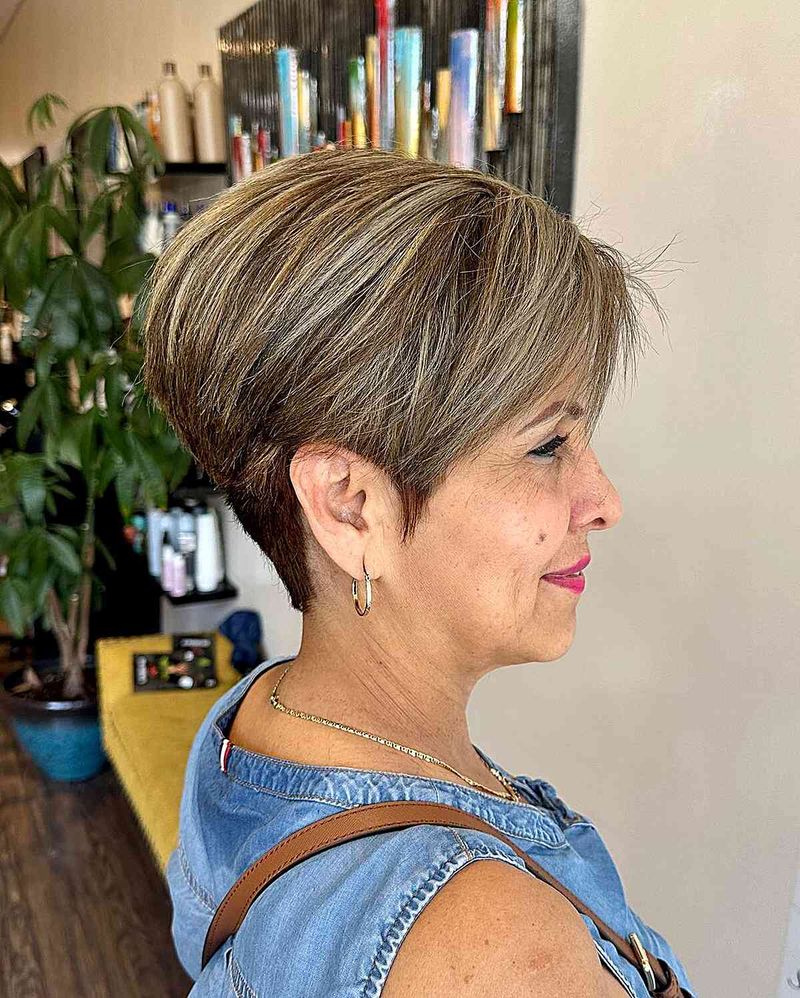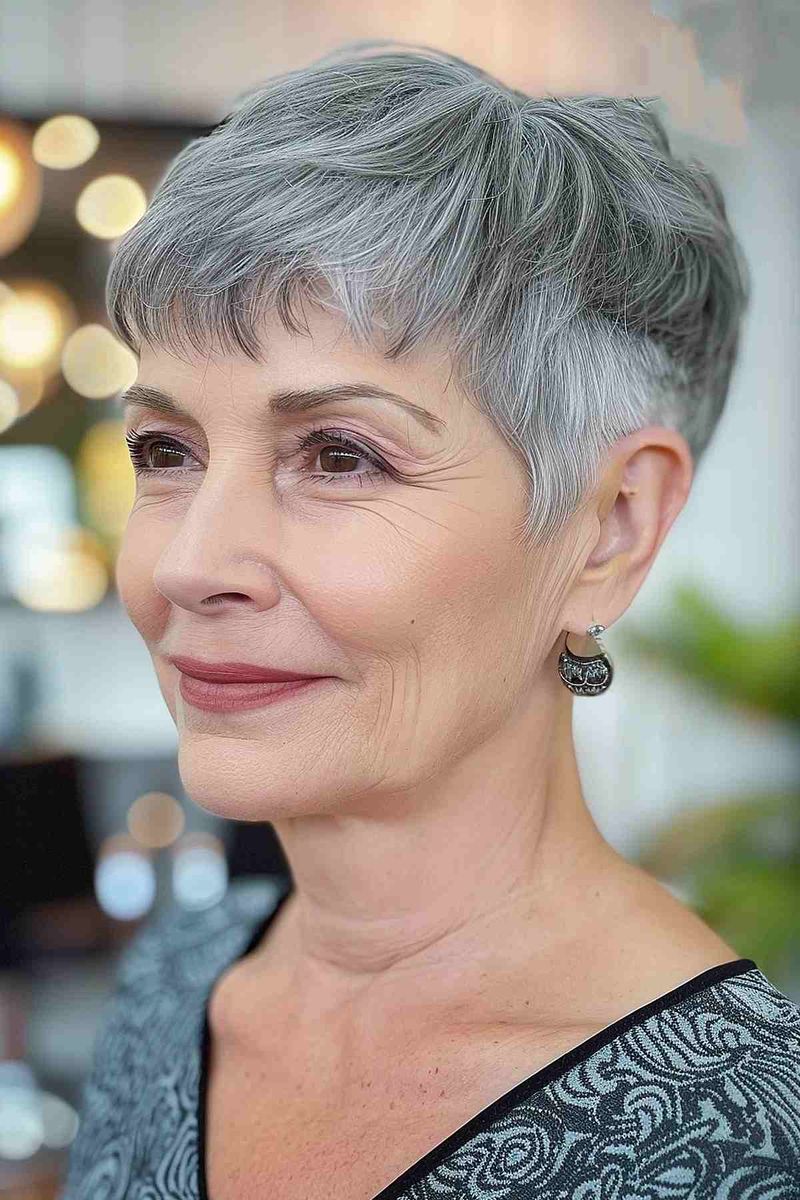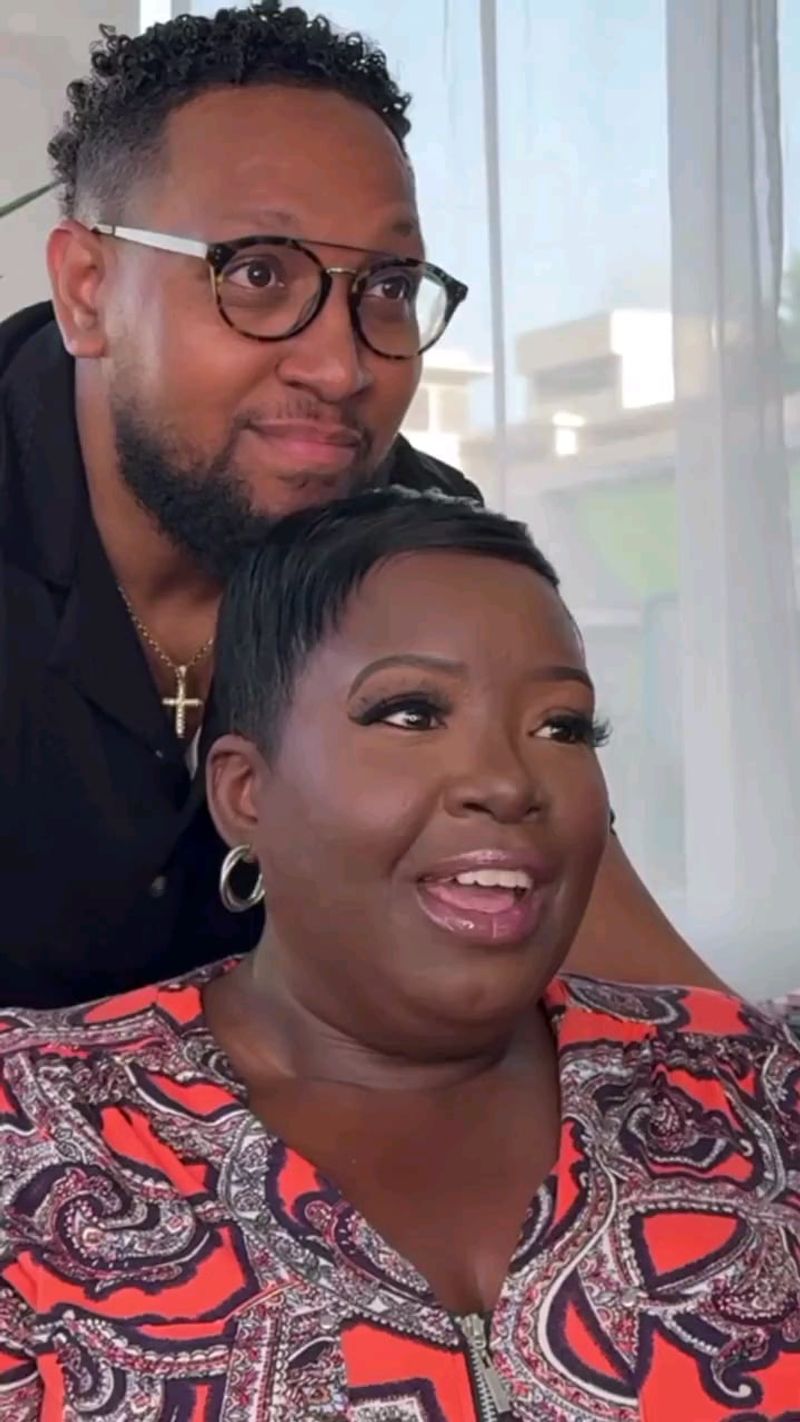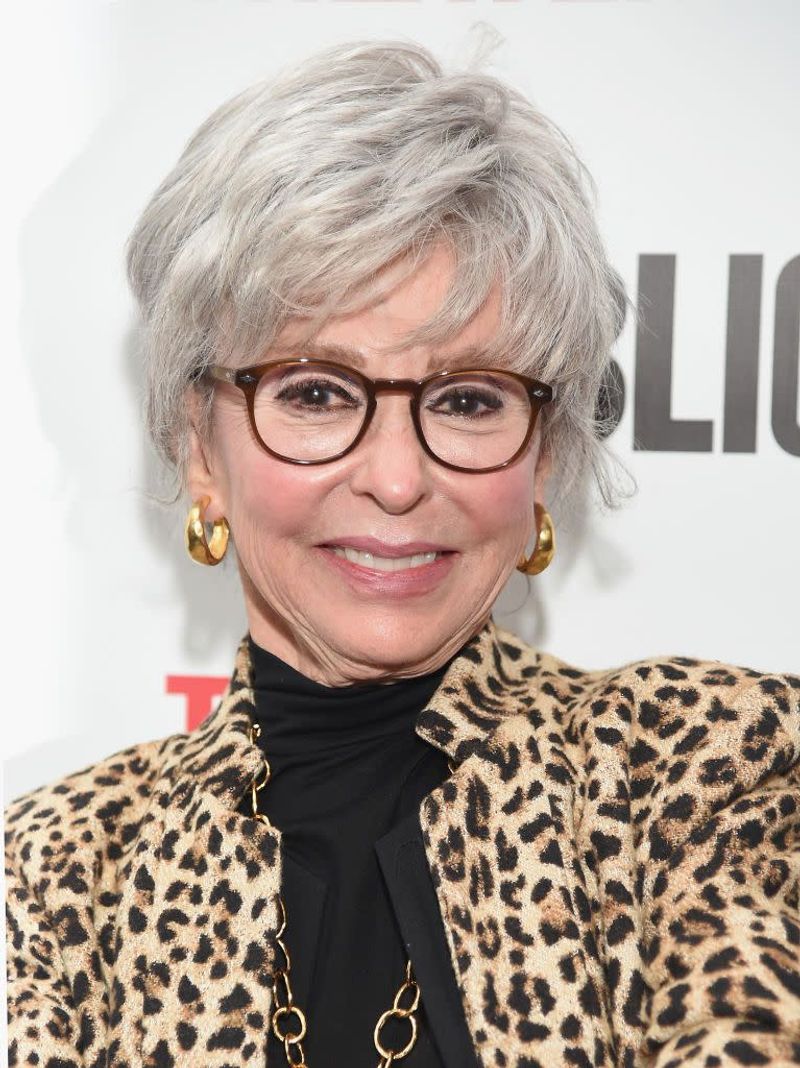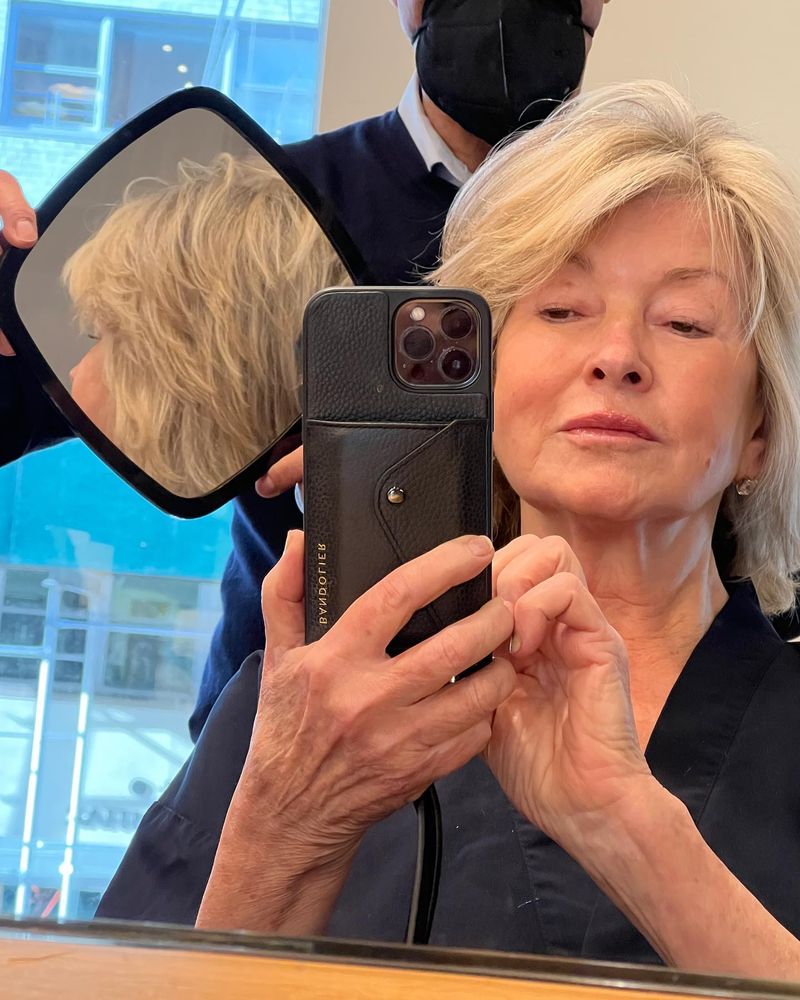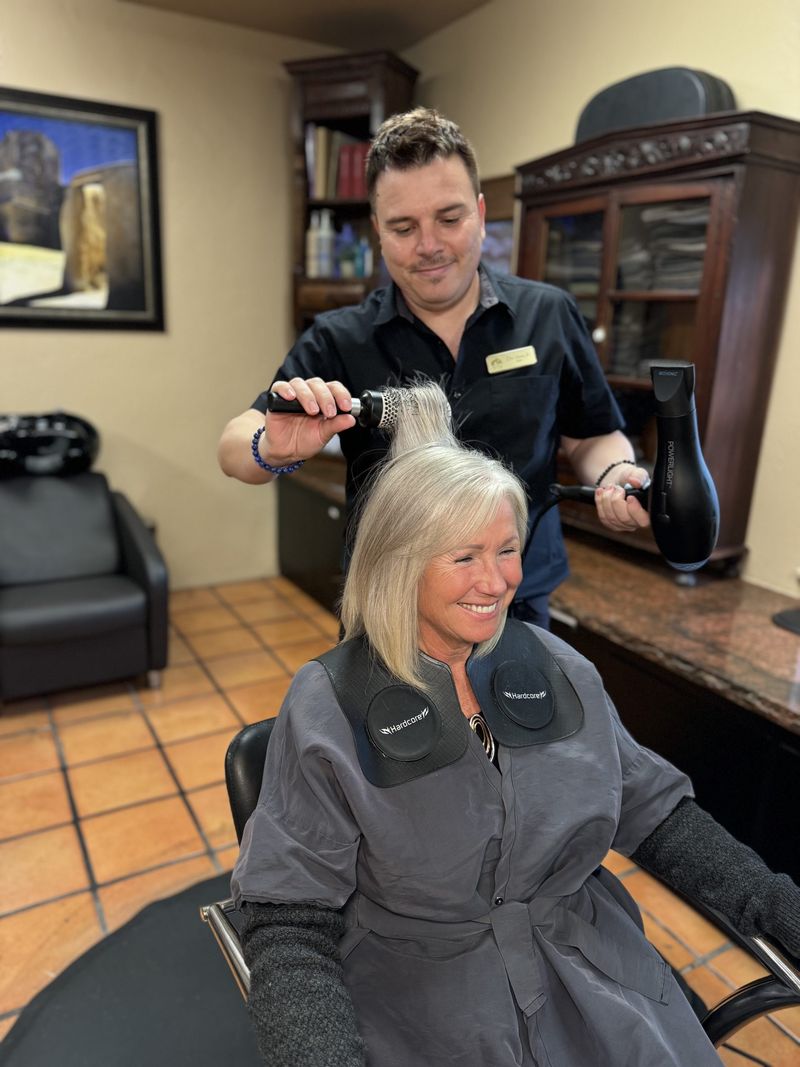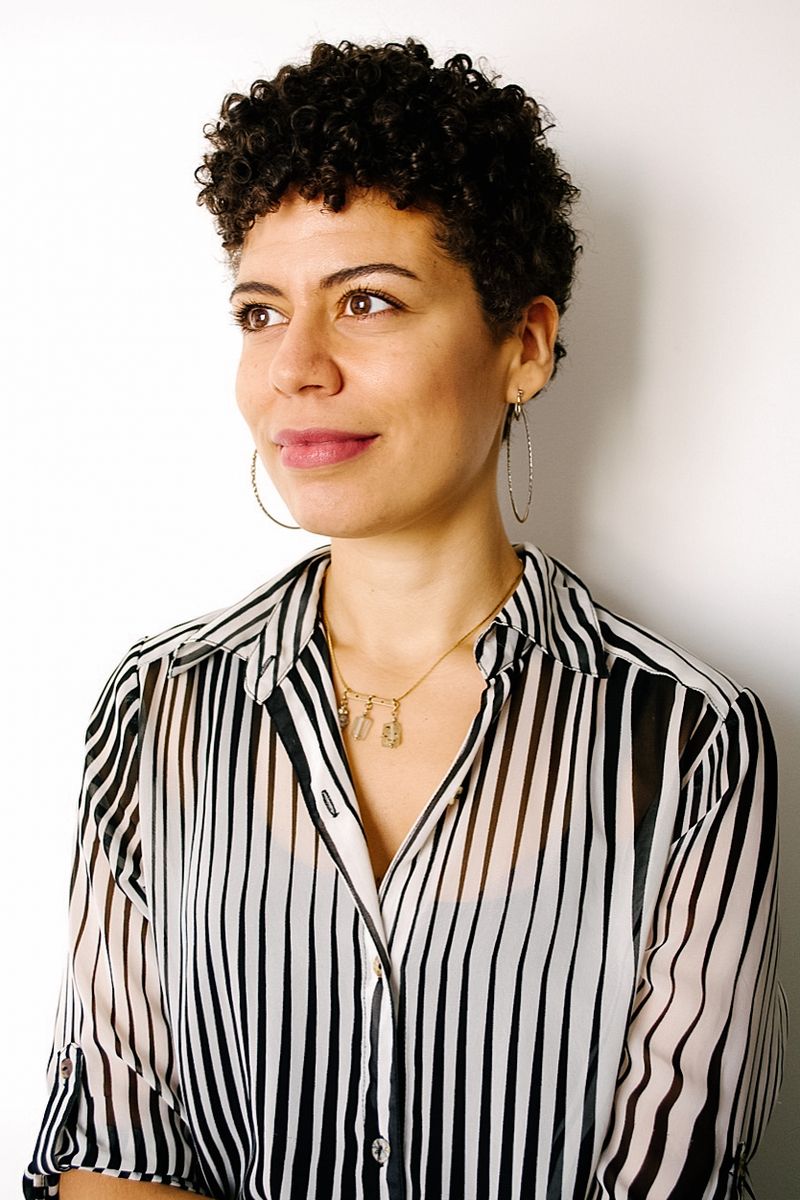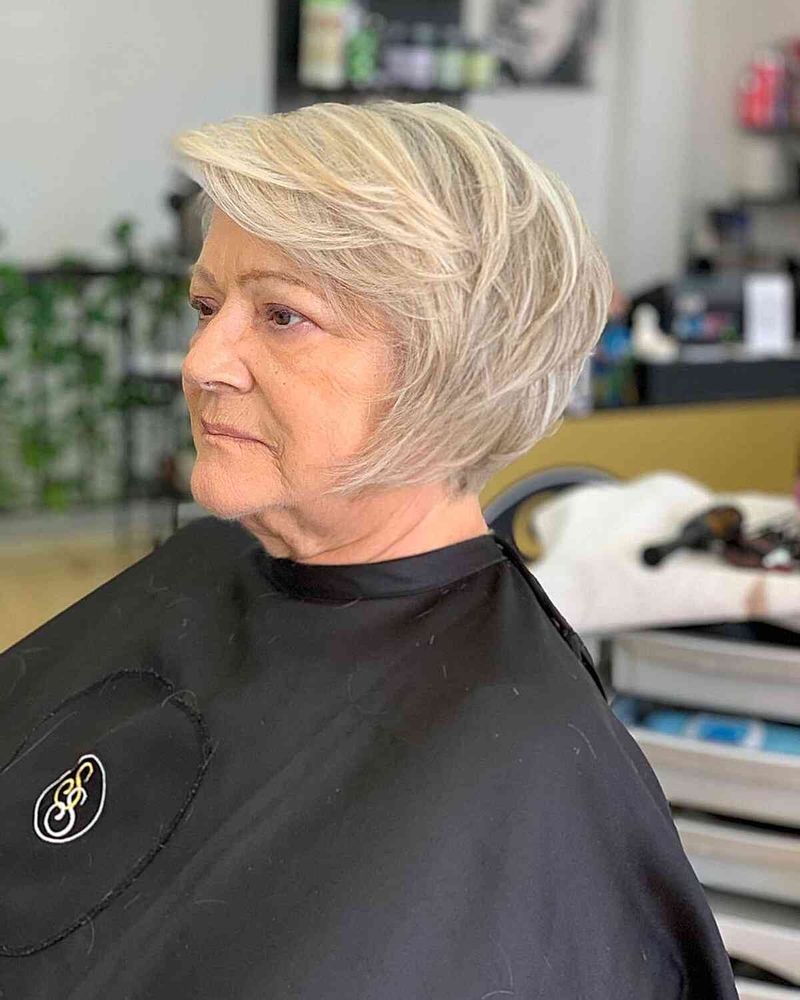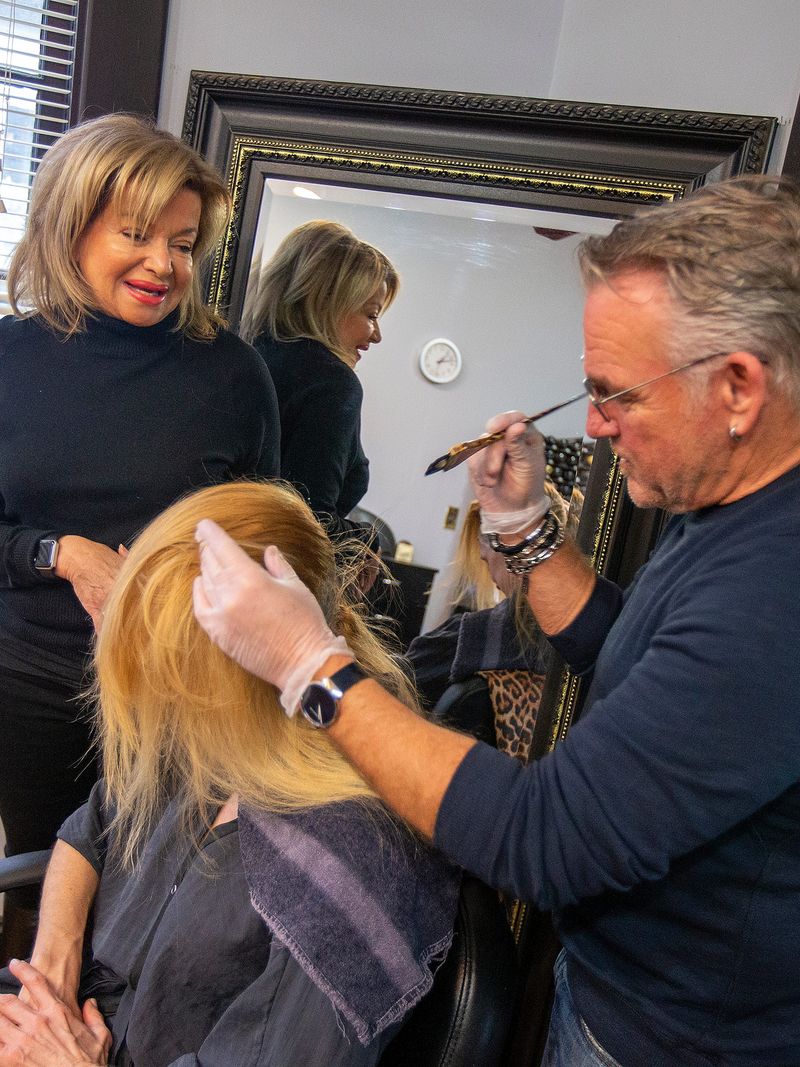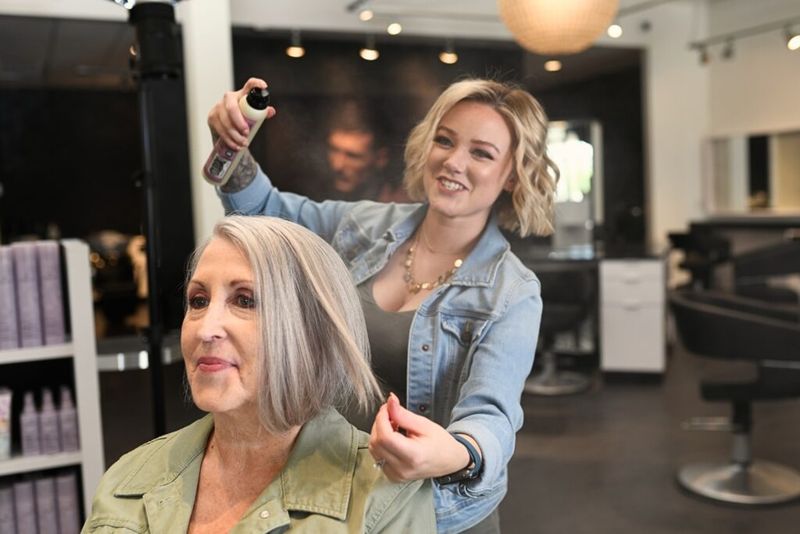Getting a haircut seems like a simple errand, but as we age, it can stir up unexpected feelings. The snip of scissors can trigger memories, spark self-reflection, or even mark major life transitions. What once was just a routine appointment becomes a moment loaded with meaning, especially when we look in the mirror and see how time has changed us.
1. Mirror Moments Become Time Machines
Salon mirrors don’t lie, and that’s both the beauty and the challenge. Sitting in that chair forces you to really look at yourself, sometimes for the first time in months. Every new gray hair or subtle line tells a story of your journey.
For many, these mirror moments trigger memories of younger days when haircuts were just about style, not about managing age-related changes. The reflection staring back becomes a before-and-after of your life.
Related: -14 Empowering Pixie Styles for Women Over 40 Who Own Their Look
It’s not always easy, but these moments can be powerful opportunities for self-acceptance. Many find peace in acknowledging both what’s changed and what remains wonderfully the same.
2. Saying Goodbye To Youthful Styles
There comes a day when your stylist gently suggests that perhaps the hairstyle you’ve loved since college might not be working anymore. This conversation can feel like being pushed out of a club you weren’t ready to leave.
The realization that certain cuts now make you look older rather than younger hits hard. What worked at 25 doesn’t necessarily complement at 55, and accepting this shift requires mourning your former aesthetic identity.
Many find unexpected freedom in this transition, discovering styles that honor their current selves rather than chasing an outdated image. It becomes less about looking younger and more about looking authentic.
3. Hair Loss Confrontations
For many, especially men, haircuts become increasingly emotional as they track the progression of thinning hair. Each appointment might reveal a little more scalp, a little less of what once was. The stylist’s careful maneuvering around sparse areas speaks volumes without words.
Women experience this too, though often less visibly discussed. Female pattern hair loss affects millions, yet many suffer in silence, dreading the vulnerability of exposing their thinning crowns to a stylist.
These appointments transform from maintenance to coping sessions. Many find that a skilled stylist becomes part counselor, helping navigate the practical and emotional aspects of changing hair density.
4. Gray Hair Decisions
The “to dye or not to dye” question becomes increasingly complex with age. What starts as covering a few strands can evolve into a monthly commitment that’s expensive, time-consuming, and chemically intensive. Many find themselves at a crossroads during a routine appointment.
Going gray naturally can feel like publicly announcing your age in a society that often values youthful appearance. Yet embracing silver strands has become a powerful statement for many, rejecting the pressure to maintain an artificially youthful look.
Haircuts become emotional decision points: continue the coloring routine or step into a new chapter of authentic aging? Either choice carries weight beyond mere aesthetics.
5. Post-Illness Transformations
After health challenges like chemotherapy, that first real haircut can symbolize reclaiming control. When hair grows back differently—curlier, straighter, or a different color—the stylist’s chair becomes a place to process these unexpected changes to your identity.
Many survivors describe this haircut as more emotional than any before it. It’s not just about style but about marking survival and moving forward. Stylists who understand this delicate transition become unexpected allies in the healing journey.
For some, the new growth represents a second chance, while others mourn what was lost. Either way, these appointments hold therapeutic power beyond the physical transformation they provide.
6. Budget Versus Vanity Battles
Fixed retirement incomes often force difficult beauty decisions. That $120 cut and color might have been a no-brainer during working years, but now represents a significant percentage of discretionary spending. The internal negotiation about whether to splurge or save becomes increasingly complex.
Many find themselves questioning: Is maintaining this look worth sacrificing elsewhere? The emotions run deeper than simple finances—it’s about what you feel you deserve and how you prioritize self-care in later years.
For some, finding more affordable options feels defeating, while others embrace it as practical wisdom. Either way, the haircut becomes a mirror reflecting values and priorities, not just appearance.
7. Partner Reactions Matter More
With age comes the realization that your partner’s opinion about your hair carries unexpected weight. After decades together, their reaction to your new cut can trigger surprising vulnerability. You might find yourself anxiously awaiting their response in ways you never did at 25.
Long-term relationships develop their own language around appearance changes. A partner’s casual comment about missing your longer style might sting more than anticipated, revealing insecurities about aging and attractiveness.
Many report rehearsing how they’ll present their new look at home. This preparation isn’t vanity—it’s acknowledging that after years together, these small moments of reaffirmation become increasingly precious as other validations of youth and beauty fade.
8. Professional Identity Shifts
For those approaching retirement, haircuts can mark the transition from professional to personal identity. The polished look maintained for decades in the workplace suddenly seems unnecessary, prompting questions about who you are without that role.
Many report feeling liberated by finally growing their hair longer, going shorter, or trying bold colors after years of conservative styles. Others find comfort in maintaining their professional look, preserving a connection to their career accomplishments.
These haircut decisions become symbolic rehearsals for the bigger retirement transition. The stylist’s chair transforms into a safe space to experiment with who you might become in this next chapter, one snip at a time.
9. Generational Style Gaps
Walking into a salon filled with younger clients and stylists can suddenly make you feel like a time traveler. The music, conversations, and trending styles create an unexpected generation gap experience that wasn’t there just a decade ago.
Many find themselves struggling to communicate what they want to stylists who may not understand references to Dorothy Hamill cuts or 80s layers. This translation difficulty often leads to disappointment or uncomfortable compromises.
Finding a stylist who bridges these generational divides becomes increasingly valuable. The emotional relief of being understood—both aesthetically and culturally—makes these relationships worth their weight in gold, especially when you’re navigating age-appropriate styles that still feel current.
10. Physical Limitations Change The Experience
Salon visits that were once relaxing can become physically challenging as we age. Sitting for long periods, neck pain from the washing station, and difficulty communicating needs due to hearing changes can transform a simple haircut into an endurance test.
Many seniors report anxiety before appointments, worried about these practical challenges rather than the style itself. Finding accommodating stylists becomes crucial—those who offer extra cushions, breaks during longer services, or patience with communication needs.
The emotional impact of these limitations runs deep. Many mourn the loss of luxurious, lengthy salon experiences they once enjoyed, while others feel embarrassed about needing accommodations, though they shouldn’t.
11. Mourning Former Glory Days
Those old photos the stylist asks you to bring for reference can trigger unexpected grief. Looking at pictures from decades past—when your hair was thicker, naturally highlighted, or effortlessly manageable—can feel like meeting a version of yourself who no longer exists.
Many experience a moment of disconnect between their mental self-image and current reality during these appointments. The person they feel like inside doesn’t match the one in the mirror, creating a jarring sense of loss.
Skilled stylists recognize this mourning process and help clients celebrate what’s beautiful now rather than chasing impossible past versions. These emotional transitions often lead to deeper self-acceptance when handled with sensitivity and realistic expectations.
12. Touch Becomes More Meaningful
The simple human contact of a haircut—fingers running through your hair, gentle scalp massage during washing—takes on deeper significance with age. For many seniors, especially those living alone, this might be rare physical contact in a world where casual touch diminishes with age.
Research shows touch deprivation is common among older adults, making salon visits therapeutic beyond the aesthetic benefits. Many report the washing portion being their favorite part, not for cleanliness but for the nurturing human connection it provides.
This emotional response to salon touch isn’t indulgence—it’s meeting a fundamental human need. Regular appointments often serve as wellness interventions, providing scheduled access to appropriate, professional touch in a dignified setting.
13. Stylist Relationships Span Decades
Long-term stylist relationships often outlast friendships, jobs, and sometimes even marriages. The person who has been cutting your hair for 30 years holds a mental timeline of your life’s major events, all discussed from the intimacy of their chair.
Many report that their stylist knew about divorces, career changes, and health scares before close friends did. There’s something about the combination of physical proximity, regular contact, and not having to make eye contact that creates a unique confessional space.
When these stylists retire or move away, the loss can feel like genuine grief. Finding someone new means starting over with your hair history and life story—a transition that’s about much more than finding someone who can manage your cowlick.
14. The Last-Ditch Youth Attempt
Almost everyone experiences that one appointment where they bring in a dramatically younger-looking reference photo, hoping for transformation. This “turning point” haircut often comes after a significant life event—retirement, divorce, or health scare—triggering a desire to recapture something lost.
Stylists recognize these moments instantly. The best ones gently guide clients toward age-appropriate interpretations that capture the essence without creating disconnects between appearance and identity.
While sometimes dismissed as vanity, these attempts often represent deeper emotional processing—marking transitions, reclaiming control, or testing whether joy can be recaptured through external change. The haircut becomes a physical manifestation of internal rebuilding, far more significant than just snipping strands.

